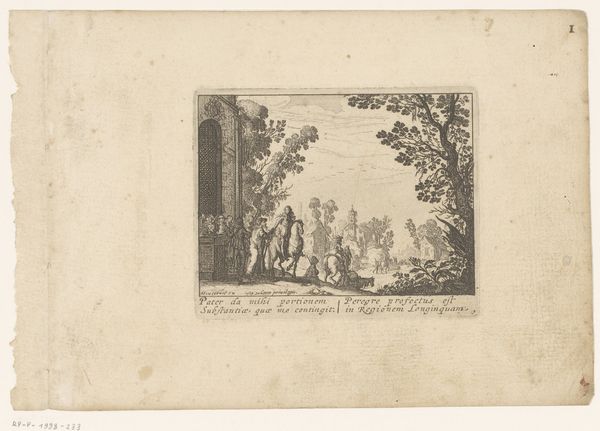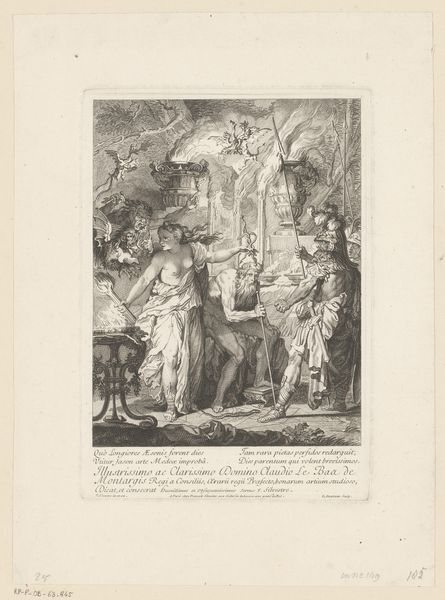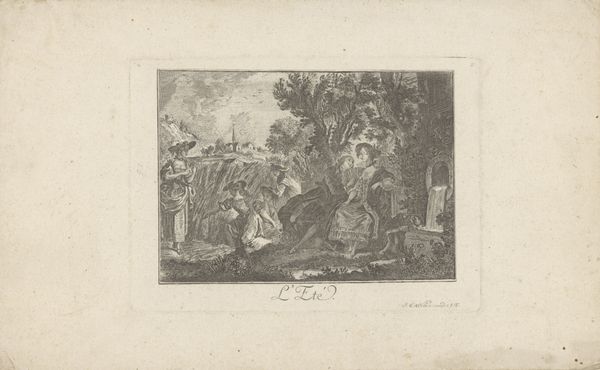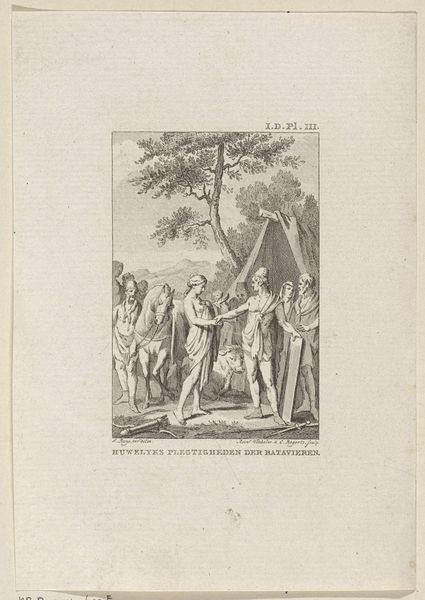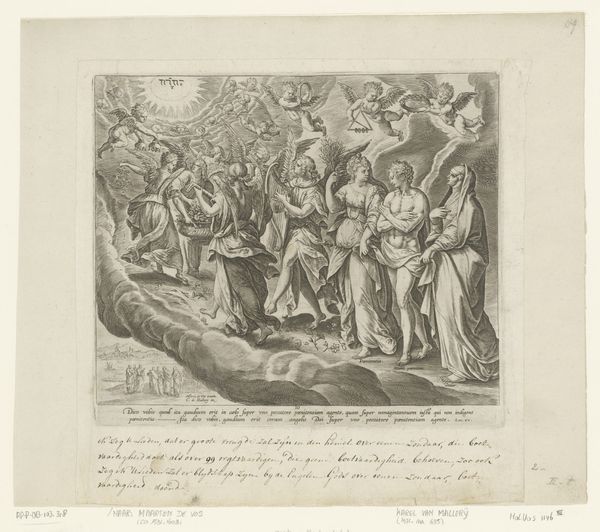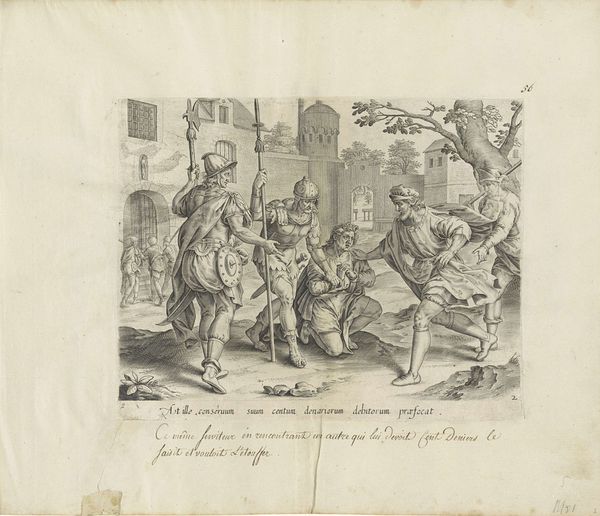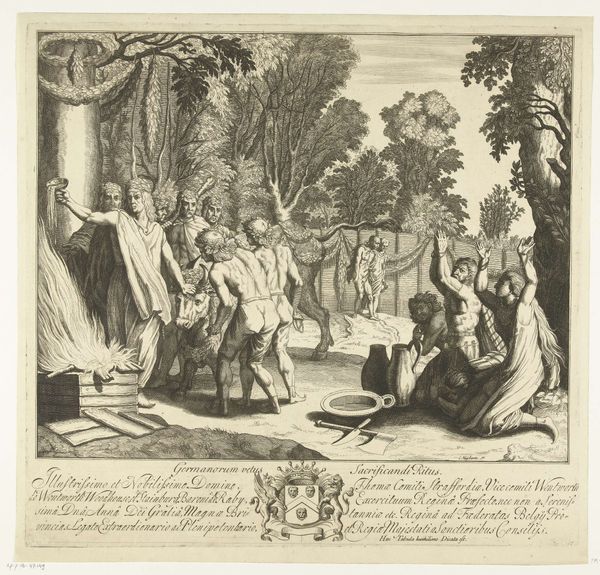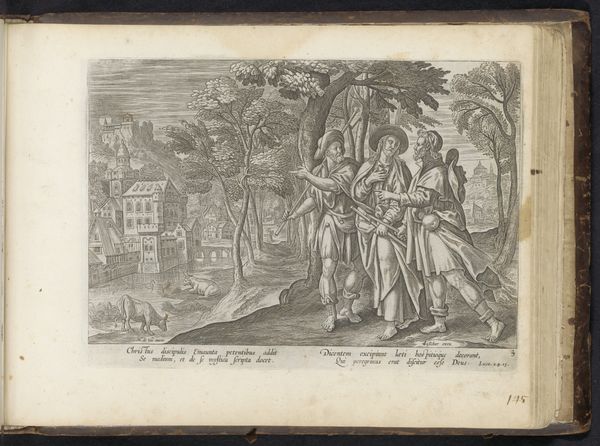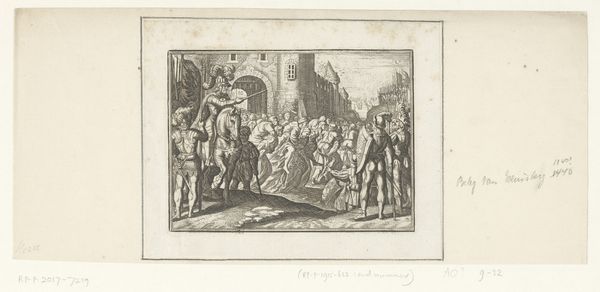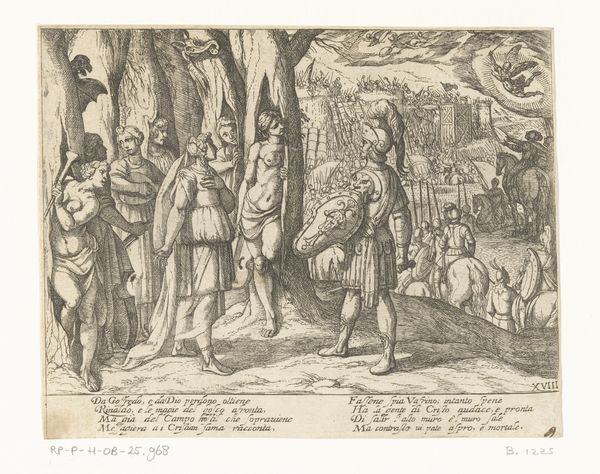
print, engraving
#
narrative-art
# print
#
landscape
#
figuration
#
genre-painting
#
northern-renaissance
#
engraving
Dimensions: height 201 mm, width 246 mm
Copyright: Rijks Museum: Open Domain
Curator: This engraving, titled "De landheer inspecteert de velden," created between 1579 and 1585, resides here at the Rijksmuseum. It presents us with a richly detailed landscape scene rendered in the style of the Northern Renaissance. Editor: It strikes me as unsettling. Despite the pastoral setting, there's a definite tension in the body language of the figures. And that dark, overgrown field looms menacingly. Curator: Well, let’s unpack that. The scene depicts a landowner surveying his field. Notice the inscription along the bottom? It's a biblical reference to the parable of the wheat and the tares. "Bonum semem seminatum unde ergo zizania." “You have sown the good seed in your field; whence then come the weeds?” The artwork thus takes on the societal dimensions of justice, land ownership, and hidden threats in our own societies, as it engages ideas of economic injustice, wealth distribution, or, more generally, structural social inequity. Editor: That context drastically shifts my interpretation. The landowner's seemingly benign inspection now reads as a power dynamic fraught with potential conflict. It’s a clear demonstration of anxiety concerning land ownership and challenges in agrarian society at the end of the sixteenth century. Even the child in the foreground now seems to be carrying something heavy; that bag now embodies, not so benignly, the toil and labour required for harvests in agricultural systems and economics. Curator: Indeed, that religious and cultural lens emphasizes not just the ownership of the land, but the responsibilities and moral dilemmas it entails. Considering Pieter Jalhea Furnius's likely Protestant background, the work resonates with contemporary political and religious debates in Europe at the time. Editor: Absolutely. The medium—an engraving—further disseminates this commentary to a wide audience, transforming it from a mere snapshot into a potent statement reflecting and shaping the socio-political landscape. How easily visual culture shapes perception, as engravings get diffused throughout political milieus to sway beliefs, attitudes and worldviews. Curator: Thinking about how visual and material culture interact with broader narratives helps ground it within a time and a network. Editor: It definitely deepens my initial response to the print; the tension comes through loud and clear as these contextual components coalesce into meaning. Thank you for unveiling some new lenses through which to appreciate this print.
Comments
No comments
Be the first to comment and join the conversation on the ultimate creative platform.
